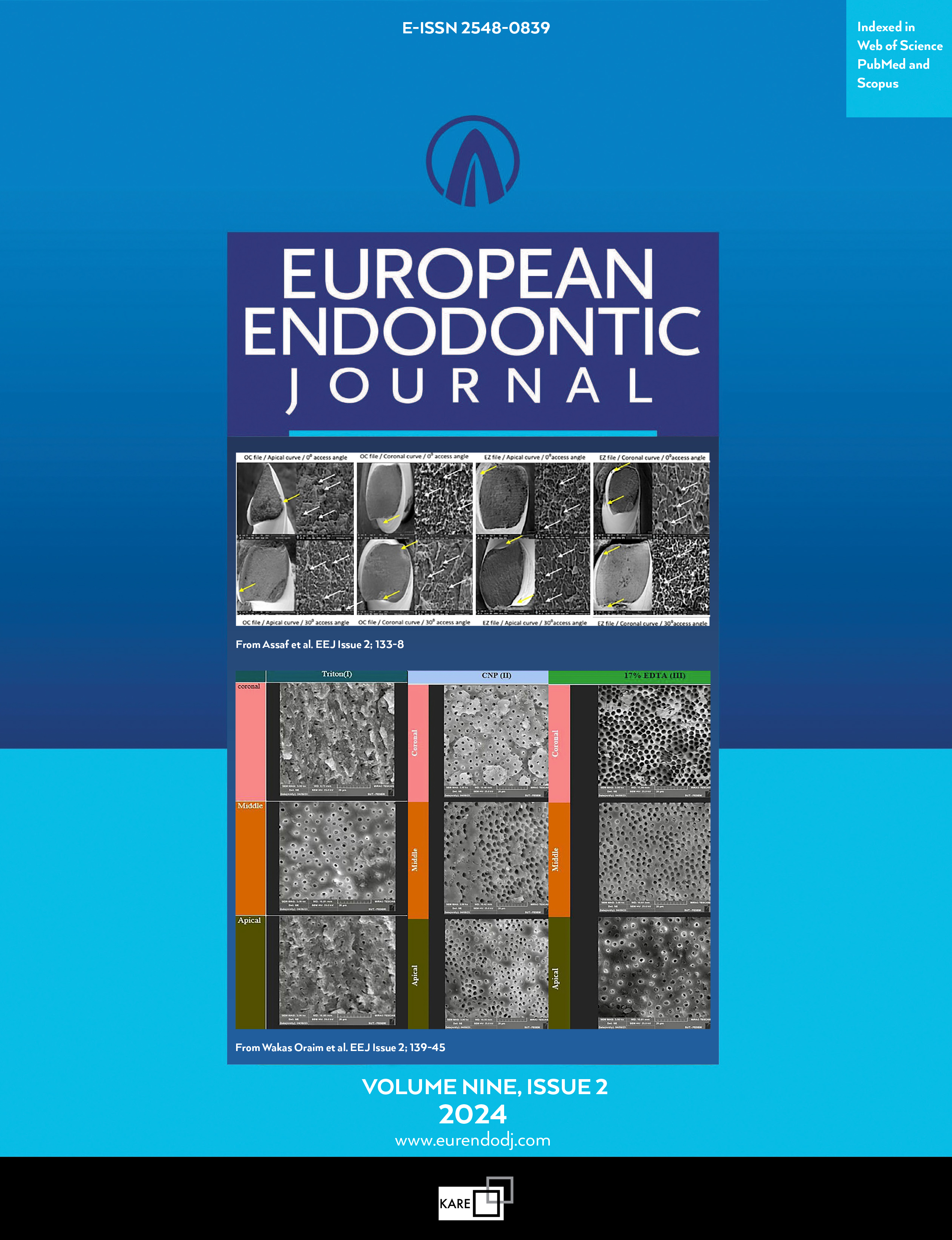Metrics
2022 IMPACT FACTOR
5 year Impact Factor
Eigenfactor
2022 CiteScore
Journal Citation Reports (Clarivate, 2023)(Dentistry, Oral Surgery & Medicine (Science))
Comparison of Reverse Sandwich Restorations Versus Composite Fillings for the Restoration of External Cervical Resorptions: An In-Vitro Study
Thilla Sekar Vinothkumar1, Krisha Doshi2, Nivedhitha Malli Sureshbabu2, Jayalakshmi Somasundaram2, Anandhi Sekar Arthisri3, Frank C. Setzer4, Venkateshbabu Nagendrababu51Department of Restorative Dental Sciences, Division of Operative Dentistry, College of Dentistry, Jazan University, Jazan, Saudi Arabia2Department of Conservative Dentistry and Endodontics, Saveetha University, Saveetha Institute of Medical and Technical Sciences, Saveetha Dental College and Hospitals, Chennai, India
3Department of Oral Medicine and Radiology, Meenakshi Ammal Dental College and Hospital, Meenakshi Academy of Higher Education and Research (MAHER), Chennai, India; Centre of Molecular Medicine and Diagnostics (COMManD), Saveetha Dental College and Hospitals, Saveetha Institute of Medical and Technical Sciences, Saveetha University, Chennai, India
4Department of Endodontics, School of Dental Medicine, University of Pennsylvania, Philadelphia, Pennsylvania, USA
5Department of Preventive and Restorative Dentistry, University of Sharjah, College of Dental Medicine, Sharjah, UAE
Objective: The aim was to compare the reverse sandwich restoration to resin composite restorations re- garding marginal adaptation, fracture resistance, favourable/unfavourable fractures in the management of external cervical resorption.
Methods: Forty-eight extracted maxillary central incisors were selected and endodontically treated. Cervical regions of the labial root surfaces received simulated resorptive defects and were restored as three randomly allocated groups: Reverse Sandwich Restoration (resin composite + resin-modified glass ionomer) (RSR); resin composite restoration (COMP), and no restoration (NR). Each group was further divided into two subgroups (n=8 each): Thermomechanical Aging (TA) (equivalent to one year) and No Aging (NA). Marginal adaptation was scored by scanning electron microscopy. Fracture resistance was tested using a universal testing machine. Favourable versus unfavourable fractures were classified based on fracture extent.
Results: TA decreased the marginal adaptation for both RSR and COMP. Mean fracture resistance per groups were: RSR-NA 1522.4±94.9N, RSR-TA 939.6±72.9N, COMP-NA 1197.6±95.7N, COMP-TA 870.4±86.3N, NR-NA 1057.1±88.1N, and NR-TA 836.6±81.9N, respectively. Fracture resistance was the highest for RSR- NA compared to all other groups (p<0.05). TA decreased the fracture resistance in all groups (p<0.05), there was no significant difference between RSR and COMP regarding fracture resistance and favourable/ unfavourable fractures (p>0.05).
Conclusion: RSR provided comparable results to resin composite fillings to restore artificial cervical defects pertaining to marginal adaptation, fracture resistance, and favourable versus unfavourable fractures. RSR is preferable due to its inherent biocompatibility to the periodontium. (EEJ-2023-04-050)
Corresponding Author: Thilla Sekar Vinothkumar
Manuscript Language: English
(417 downloaded)


